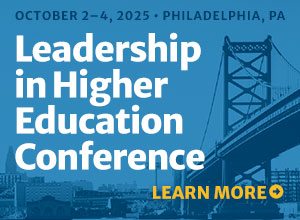Campus Civility Project: Emotionally Intelligent Conversations
For more articles like this, check out an Academic Leader subscription or a free three-week trial! Because divisive national political rhetoric has spilled over into higher education, Wake Technical Community College launched the Campus Civility Project: Emotionally Intelligent Conversations in 2017. This project was part of a Campus Compact Fund for Positive...
Emotional, Physical, Financial, and Mental Health Effects of Noncollegial Colleagues
Tracy Ford has just completed her PhD and is searching for a full-time position in a university. She is a much sought-after young academic as she has published six articles and presented at a national conference. Also, she has experience in teaching in an adjunct position, and her evaluations were...
Seven Key Questions for Improving Communication with Your Dean
Being a department head is one of the hardest jobs on campus. Representing both the unit and the administration can be a real balancing act, and your most vital partner in this complex role is likely to be your dean. New department heads may never have worked closely with the...
Collective Terms Perpetuate Stereotypes and Biases: Change Begins with Leadership
It was a sweltering July morning when an email from one of my librarians arrived in my inbox, its subject line proclaiming, “THE LIBRARIANS ARE HOT!” I had recently taken over management of library faculty and staff, and this was my first crisis. The library’s air conditioning unit had failed,...
The Departmental Gestalt: Fostering Student Major Identity and Program Pride
This article first appeared in Academic Leader on September 4, 2020 © Magna Publications. All rights reserved. Like many others in the trenches of academia, we’ve chaired, taught, and advised in a small, understaffed, underfunded, and oversubscribed program. While other understaffed and oversubscribed departments limped along, ours notably thrived, resulting in strong...
How to Encourage Faculty to Adopt Open Educational Resources
The growth of open educational resources (OER) may prove transformative in the way online learning has been. Textbook costs have skyrocketed to the point that finding an alternative is no longer simply an issue of saving students money but of preserving educational outcomes as students forgo textbooks they cannot afford....
Reconceptualizing the Peer Review Process for Online Courses
Over the past two decades, academic deans, directors, and faculty have struggled to develop an effective peer review process for online courses. Most institutional review processes begin and end with the Quality Matters (QM) standard, the most widely accepted quality standard in the field of online education. But while QM...
Invest in Your Strategic Meetings by Engaging an Outside Facilitator
Meetings are not foreign to academic leaders, but strategic planning meetings and meetings aimed at complex problem-solving with partners are weightier than others. In these situations, choosing to use an experienced facilitator who is outside your department or college can result in these benefits: Clearly defined outcomes with measurable progress...
Getting Organized
Although academic leaders have looked to the promise of a “paperless office” for many years, that future vision never seems to materialize. While it’s true that many forms of communication that appeared in hard copy now reach us in electronic versions, we still seem to be inundated by a never-ending...
Establishing Effective Relationships Between Faculty and Instructional Designers
Faculty routinely engage the assistance of instructional designers when designing and developing courses. To build trust and respect between faculty and instructional designers, each has to realize that they are working toward a common goal—providing students with active learning experiences that facilitate deep learning. This relationship is important as each brings...












